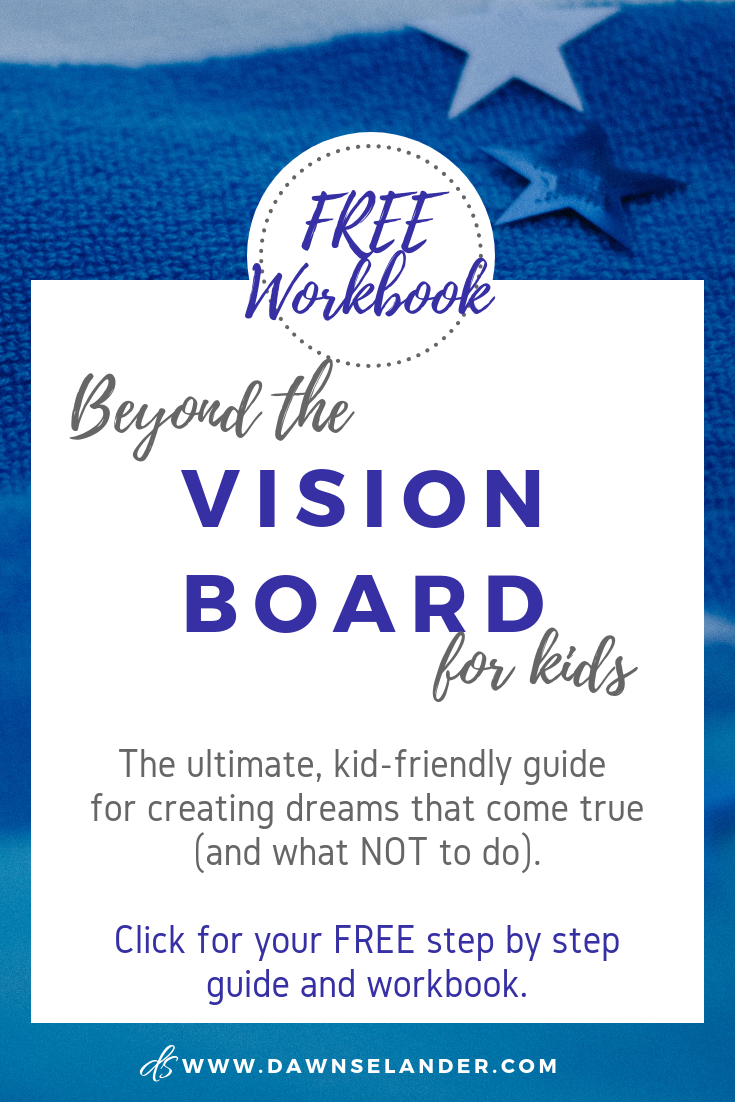
So, it’s the beginning of another year. I love the potential and the hope that each new year brings. It’s a new chance, a new start or it can even be a do-over. We make our resolutions, some we’ll keep and others will fail, but nonetheless we all feel motivated and inspired to somehow make our lives better.
A vision board is a powerful tool for manifesting a better life, and they become trendy around the new year. A quick “vision board” google search will give you lots of listings for articles, blogs, pinterest ideas, youtube videos, companies that sell products to make vision boards, and even event planners that host vision board parties. You’ll also find a variety of topics from how to create a vision board step by step to articles about why you should throw your vision board away- YIKES!
I believe vision boards:
- give us space to create a concrete representation of our vision
- motivate, inspire and create excitement for reaching our goals and desires
- provide structure
- help us to form an action plan and set goals
- are reminders of our visions
- become a record of our achievements and successes
But, I also believe vision boards need to be used the right way. So stick around and you'll discover three reasons why visions boards don't work along with the simple steps to create a vision board with your kids that does.
Where are you headed?

THREE REASONS YOUR VISION BOARD WON’T WORK
1. NOT HAVING AN ACTION PLAN
Now, some people are just powerful manifestors. They can create their board, put it away, and their dreams just come true. And let’s face it, some people don’t even have to bother with the board, it seems all they have to do is think it and it becomes real. And, while I do think we all have the ability to be powerful manifestors like that, some of us just aren’t there, YET. I believe we can all get there with some practice. Maybe something to put on your vision board.
Soooo, the easy solution is to create an action plan along with your vision board. A detailed plan that will get you from where you are now to where you want to be. Breaking down a dream or goal into actionable steps will also remove any overwhelm you might be feeling and make it manageable. And, when you map out your action plan, you’ll be able to see that your dream really can become your reality. I share more on creating the action plan in the step by step instructions and in the FREE workbook I created for you.
2. MAKING IT VISUAL ONLY
A vision board holds your visions for a better future and a better life. Vision boards are created with images for your eyes so you can look into your desired future. But, they are so much more powerful when we use all of our senses and not just one.
Embodying the dream or the goal using all five senses and feeling the emotion associated with the dream or vision is so much more powerful than just visualizing. Make your “vision board” a sensational experience meaning “of the senses” and focus on what you are feeling as if the dream was real. Have your child close their eyes and take a few deep breaths. What emotions are stirring around inside of you when you imagine your dream has already come true? What are you thinking, what do you feel in your heart? Use all five senses, get clear on the emotions and feel it as if it was real.
3. ONLY DREAMING BIG
No, I’m not saying don’t dream big, but I am saying not to forget about the smaller dreams, too. You probably have goals that aren’t as life changing as your bigger dreams, but they are equally important. When you start to see progress and results with your smaller goals, it gives you confidence and hope that you can manifest the big dreams, too. Celebrating the smaller successes along the way will motivate you to keep reaching for the bigger ones. You are a powerful manifestor!
KID-FRIENDLY VISION BOARDS THAT WORK
Kids can use vision boards just like adults. They can help your kids reach the stars by teaching them to dream, set goals, create a plan to get there, and celebrate their successes. Skills they can use for a lifetime at home, at school, and eventually at work.
Go ahead and grab the step by step workbook I created for you in the Mindfulness Library. If you're already a subscriber and have your password, you can head right over to the Mindfulness Library.
Here’s what you’ll need:
Poster board, foam board,
Variety of paper, scrapbook, construction
Magazines, books, printer
Scissors, decorative scissors
Glue sticks
Gel pens, markers, crayons
Stickers, ribbons, confetti
Journal
HERE'S WHAT YOU DO:
STEP 1- Create your board
Get clear on the goals and desires. Discuss and brainstorm with your child some goals or visions that they have for both the near and distant future. You can jot down some ideas in the workbook on page 1. Here are some examples if you need inspiration:
- Save money to buy a certain item
- Do 10 acts of kindness
- Pass the math test
- Make the honor roll
- Learn how to spell their name, learn the abcs
- Be more responsible
- Read 10 books
- Make the team
Don't forget to ask your child WHY they want to achieve this particular goal or dream. A crystal clear “why” is so motivating. Be sure to add their reason to page 1 in the workbook.
Now it’s time to start cutting up the magazines and books. Clip pictures, words, quotes, and affirmations or have your child make their own drawings that represent their vision or goal. If you can’t find the perfect picture, you can always go to the internet and print images from there.
SUCCESS TIPS:
- Remember one of the mistakes with vision boards is to only use vision. Clip pictures that represent the feeling you’ll have when you have manifested your vision. For example, when your child passes the math test, they might feel proud and clip a lion or smart and clip a graduation cap and gown. You can use pages 2 and 3 in the workbook to help identify the feelings and emotions associated with the goals and dreams.
- Depending on your child’s age and ability, help them choose which visions they’ll add to the board. Just keep in mind that for some, ten visions might be overwhelming or even too distracting to focus and get things done. For younger kids, one at a time is enough.
- Don’t forget to mix it up by combining smaller goals with some bigger dreams so your child can celebrate their achievements and stay motivated.
- Decorate the board. Personalize it and make it as unique as your child. Use colors and themes that your child likes. Use ribbons, stickers, confetti or anything else that inspires your child to smile and create.
STEP 2- Create Your Action Plan
This is where your child will lay out the details for getting from where they are to where they want to be. They can include this step by step on the board, but if the board is filled with creative visions, then they might want to use a separate notebook or journal for mapping out the plan. Or, I have 5 pages in the workbook for you to map out the action plan.
Help your child determine where they are starting out now and write that down. Then simply add step 1, step 2, step 3, etc. until they have listed all of the steps it will take to reach the goal. You can help younger children by writing for them using simple words or by having them draw their own pictures of the steps.
SUCCESS TIPS:
Older children can also add potential challenges they might encounter along the way, as well as solutions and support systems they can rely on for help. Learning to prepare for challenges and setbacks along the way will empower your child and create resilience for when things don’t always go right in general.
STEP 3- Check In
Keep the vision board out where your child can see it because they’ll want to check in often, daily for some goals, weekly for others- you decide. When they check in with the board be sure to review the action plan too, to see if there is something that needs to be done that day, week, etc. Use a calendar if that would be helpful. Checking in will help your child stay on track and reach their goal.
STEP 4- Celebrate
Yes, celebrate, celebrate, celebrate!! Again, you decide when and how big. You can celebrate reaching the final goal or even reaching a step in the action plan. Figure out what motivates your child and what kind of celebratory plan will work for them. Celebrating the smaller steps will help to keep your child motivated and driven for reaching the big goal.
So go ahead, click the button below for your free workbook and start creating. If you need some motivation, go ahead and look at these success stories for inspiration. You might be surprised at what you find.
Have you ever made a vision board for yourself or with your class? Are you inspired to create one now? Let me know below.
~ Dawn

